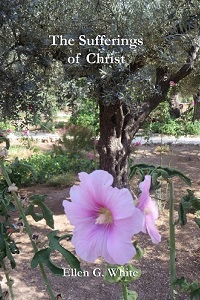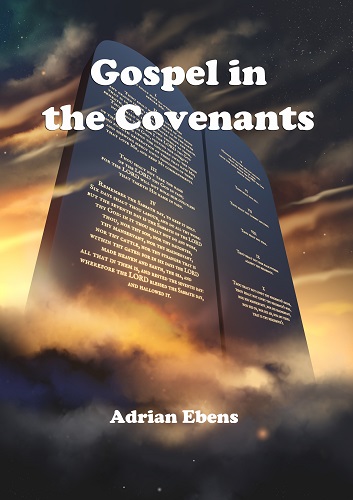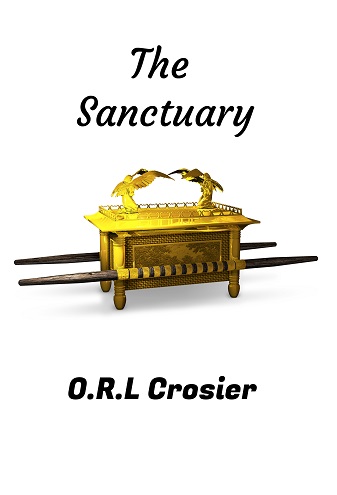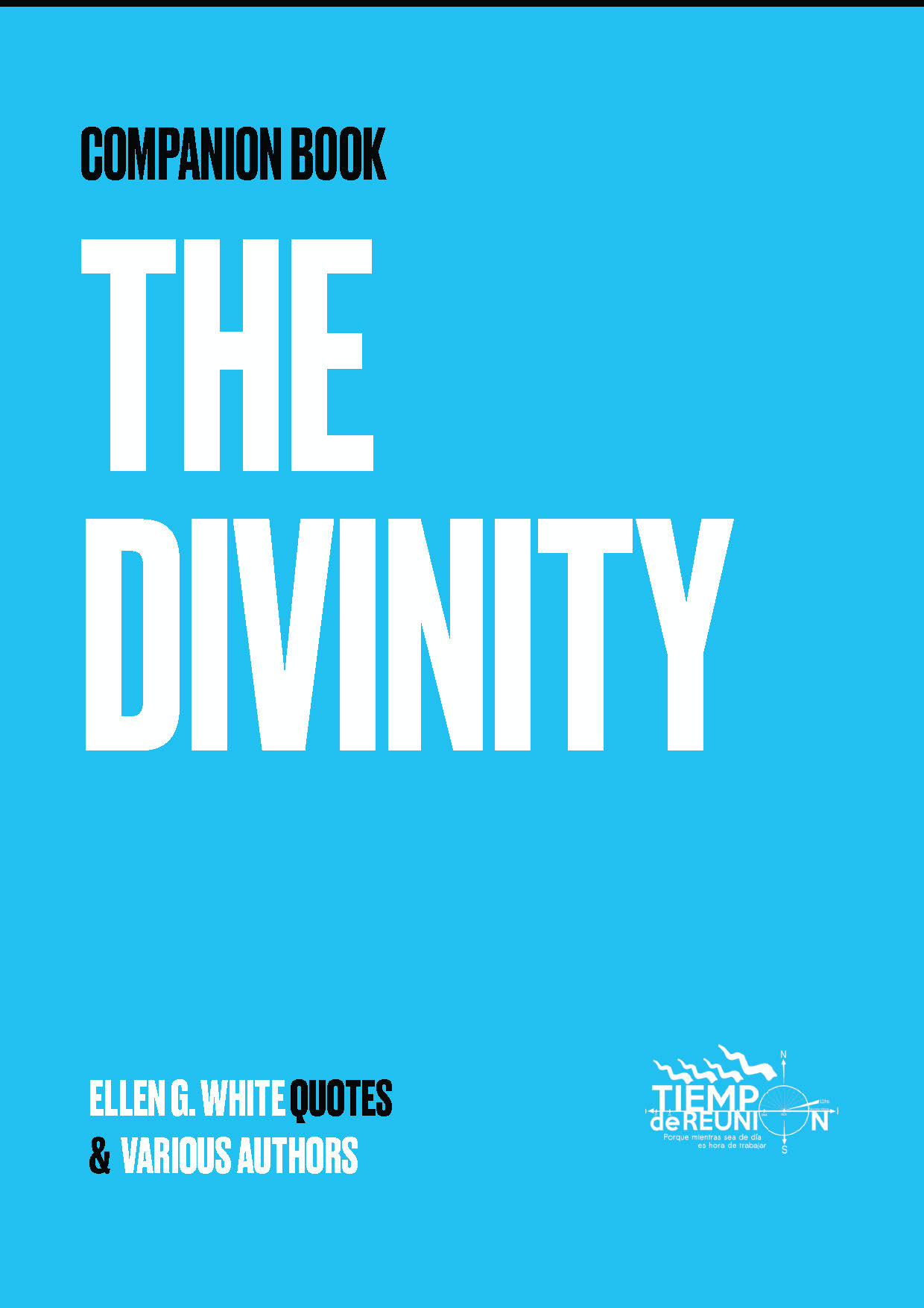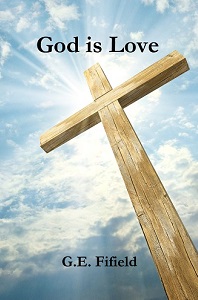The First Seal - Notes
The First Seal
Although I only plan to deal with the first seal, we will read through the prophecy of the seven seals to begin.
Read Revelation 6 and 8:1
6:1 And I saw when the Lamb opened one of the seals, and I heard, as it were the noise of thunder, one of the four beasts saying, Come and see.
6:2 And I saw, and behold a white horse: and he that sat on him had a bow; and a crown was given unto him: and he went forth conquering, and to conquer.
6:3 And when he had opened the second seal, I heard the second beast say, Come and see.
6:4 And there went out another horse [that was] red: and [power] was given to him that sat thereon to take peace from the earth, and that they should kill one another: and there was given unto him a great sword.
6:5 And when he had opened the third seal, I heard the third beast say, Come and see. And I beheld, and lo a black horse; and he that sat on him had a pair of balances in his hand.
6:6 And I heard a voice in the midst of the four beasts say, A measure of wheat for a penny, and three measures of barley for a penny; and [see] thou hurt not the oil and the wine.
6:7 And when he had opened the fourth seal, I heard the voice of the fourth beast say, Come and see.
6:8 And I looked, and behold a pale horse: and his name that sat on him was Death, and Hell followed with him. And power was given unto them over the fourth part of the earth, to kill with sword, and with hunger, and with death, and with the beasts of the earth.
6:9 And when he had opened the fifth seal, I saw under the altar the souls of them that were slain for the word of God, and for the testimony which they held:
6:10 And they cried with a loud voice, saying, How long, O Lord, holy and true, dost thou not judge and avenge our blood on them that dwell on the earth?
6:11 And white robes were given unto every one of them; and it was said unto them, that they should rest yet for a little season, until their fellow servants also and their brethren, that should be killed as they [were], should be fulfilled.
6:12 And I beheld when he had opened the sixth seal, and, lo, there was a great earthquake; and the sun became black as sackcloth of hair, and the moon became as blood;
6:13 And the stars of heaven fell unto the earth, even as a fig tree casteth her untimely figs, when she is shaken of a mighty wind.
6:14 And the heaven departed as a scroll when it is rolled together; and every mountain and island were moved out of their places.
6:15 And the kings of the earth, and the great men, and the rich men, and the chief captains, and the mighty men, and every bondman, and every free man, hid themselves in the dens and in the rocks of the mountains;
6:16 And said to the mountains and rocks, Fall on us, and hide us from the face of him that sitteth on the throne, and from the wrath of the Lamb:
6:17 For the great day of his wrath is come; and who shall be able to stand?
8:1 And when he had opened the seventh seal, there was silence in heaven about the space of half an hour.
Verse 1 of chapter 6 speaks of the opening of the first seal. What was sealed? To find that answer, we need to look in chapter 5:1.
And I saw in the right hand of him that sat on the throne a book written within and on the backside, sealed with seven seals.
John sees a being seated on a throne who is holding this book. Who is seated on the throne? We need to go to chapter 4 for that answer.
4:2 And immediately I was in the spirit; and, behold, a throne was set in heaven,
and [one] sat on the throne.
4:3 And he that sat was to look upon like a jasper and a sardine stone: and [there was] a rainbow round about the throne, in sight like unto an emerald.
Although the one sitting on the throne is not named here, we are certainly given some strong clues as to his identity. Firstly, he is seated on a throne so therefore he is a monarch and the throne upon which he was seated is in heaven therefore he is a monarch in heaven. Let’s read down to the end of the chapter.
4:4 And round about the throne [were] four and twenty seats: and upon the seats I saw four and twenty elders sitting, clothed in white raiment; and they had on their heads crowns of gold.
4:5 And out of the throne proceeded lightnings and thunderings and voices: and [there were] seven lamps of fire burning before the throne, which are the seven Spirits of God.
4:6 And before the throne [there was] a sea of glass like unto crystal: and in the midst of the throne, and round about the throne, [were] four beasts full of eyes before and behind.
4:7 And the first beast [was] like a lion, and the second beast like a calf, and the third beast had a face as a man, and the fourth beast [was] like a flying eagle.
4:8 And the four beasts had each of them six wings about [him]; and [they were] full of eyes within: and they rest not day and night, saying, Holy, holy, holy, Lord God Almighty, which was, and is, and is to come.
4:9 And when those beasts give glory and honour and thanks to him that sat on the throne, who liveth for ever and ever,
4:10 The four and twenty elders fall down before him that sat on the throne, and worship him that liveth for ever and ever, and cast their crowns before the throne, saying,
4:11 Thou art worthy, O Lord, to receive glory and honour and power: for thou hast
created all things, and for thy pleasure they are and were created.
What further evidence do we have to identify who is on this throne?
Holy, holy, holy, Lord God Almighty, which was, and is, and is to come – who is the Lord God Almighty, which was, and is, and is to come? Compare Rev 1:4
give glory and honour and thanks to him – to whom does heaven give glory, honour and praise?
who liveth for ever and ever – who lives for ever and ever? Compare with Rev
2:8
worship him that liveth for ever and ever – who do they worship?
for thou hast created all things – who is the creator of all things?
We understand this to be God the Father. This is supported by chapter 5:6, 7.
5:6 And I beheld, and, lo, in the midst of the throne and of the four beasts, and in the midst of the elders, stood a Lamb as it had been slain, having seven horns and seven eyes, which are the seven Spirits of God sent forth into all the earth.
5:7 And he came and took the book out of the right hand of him that sat upon the
throne.
The Lamb is Christ and so the one seated on the throne holding the book in his right hand must be God.
What are we told about this book in chapter 5:1?
And I saw in the right hand of him that sat on the throne a book written within and on the backside, sealed with seven seals.
The word, book, is translated from Strongs G975 – biblion – a diminutive of G976; a
roll: – bill, book, scroll, writing.
Mrs White wrote this in Letter 65 – 1898 paras 17, 18.
There in His open hand lay the book, the roll of the history of God’s providences, the prophetic history of nations and the church. Herein was contained the divine utterances, His authority, His commandments, His laws, the whole symbolic counsel of the Eternal, and the history of all ruling powers in the nations. In symbolic language was contained in that roll the influence of every nation, tongue, and people
from the beginning of earth’s history to its close. {Lt65-1898.17}
This roll was written within and without. John says: “I wept much, because no man was found worthy to open and to read the book, neither to look thereon.” [Verse 4.] The vision as presented to John made its impression upon his mind. The destiny of every nation was contained in that book. John was distressed at the utter inability of any human being or angelic intelligence to read the words, or even to look thereon.
{Lt65-1898.18}
Here we have quite a list about what was written in this scroll or book.
1. the history of God’s providences
2. the prophetic history of nations
3. the prophetic history of the church
4. the divine utterances
5. His authority
6. His commandments
7. His laws
8. the whole symbolic counsel of the Eternal
9. the history of all ruling powers in the nations
10. the influence of every nation, tongue, and people from the beginning of earth’s history to its close
11. The destiny of every nation was contained in that book.
This is a very comprehensive scroll. It sounds as if it contains the Old Testament and more.
We just read that John was distressed at the utter inability of any human being or angelic intelligence to read the words, or even to look thereon.
Even though the scroll is written on the outside as well as the inside, the outside writing cannot be read or even looked on to be read.
Revelation 5:4 And I wept much, because no man was found worthy to open and to read the book, neither to look thereon.
5:5 And one of the elders saith unto me, Weep not: behold, the Lion of the tribe of Juda, the Root of David, hath prevailed to open the book, and to loose the seven seals thereof.
So there is someone who is worthy to open the book and loose the seven seals – the Lion of the tribe of Judah, the Root of David who is Christ.
5:6 And I beheld, and, lo, in the midst of the throne and of the four beasts, and in the midst of the elders, stood a Lamb as it had been slain, having seven horns and
seven eyes, which are the seven Spirits of God sent forth into all the earth.
5:7 And he came and took the book out of the right hand of him that sat upon the throne.
So we have established that God is holding the record of the history of the earth from its beginning to its close but it is sealed with seven seals and only Christ is able to open the book. Now we will look at what happens when He loosens the seals in Revelation 6.
6:1 And I saw when the Lamb opened one of the seals, and I heard, as it were the noise of thunder, one of the four beasts saying, Come and see.
6:2 And I saw, and behold a white horse: and he that sat on him had a bow; and a
crown was given unto him: and he went forth conquering, and to conquer.
In Revelation 4:1 we are told:
After this I looked, and, behold, a door [was] opened in heaven: and the first voice which I heard [was] as it were of a trumpet talking with me; which said, Come up hither, and I will show thee things which must be hereafter.
Despite the scroll being written on inside and backside, in Revelation 6:2, John says And I saw. So, what he saw has to be things which must be hereafter because that is what he was told he would be shown.
John sees a white horse. In later verses he also sees a red horse, a black horse and a pale horse. What do the horses represent?
Zechariah 6:1-5
6:1 And I turned, and lifted up mine eyes, and looked, and, behold, there came four chariots out from between two mountains; and the mountains [were] mountains of brass.
6:2 In the first chariot [were] red horses; and in the second chariot black horses;
6:3 And in the third chariot white horses; and in the fourth chariot grisled and bay horses.
6:4 Then I answered and said unto the angel that talked with me, What [are] these, my lord?
6:5 And the angel answered and said unto me, These [are] the four spirits of the heavens, which go forth from standing before the Lord of all the earth.
What are the horses? These [are] the four spirits of the heavens, which go forth from standing before the Lord of all the earth.
There was a horseman seated on the horse and he had a bow and a crown. Now, how readest thou? What was this bow that he had?
The Greek word is toxon [G5115] meaning a bow (apparently as the simplest fabric):
- bow. The word is used only in this text in the KJV. However, in the Septuagint and in the Apostolic Polyglot, it is used for rainbow as in Genesis 9:13 I do set my bow in the cloud. It also is the word used for bow, the device for shooting arrows.
We know from Genesis 9:13 that God said the rainbow is a token of a covenant between me and the earth. We know that to be the everlasting covenant.
So, are we to be reading that the rider of the white horse who went forth conquering, and to conquer is carrying a weapon or the everlasting covenant? How readest thou?
The rider is given a crown. What does the Bible tell us about giving crowns? Proverbs 4:7-9
4:7 Wisdom [is] the principal thing; [therefore] get wisdom: and with all thy getting get understanding.
4:8 Exalt her, and she shall promote thee: she shall bring thee to honour, when thou dost embrace her.
4:9 She shall give to thine head an ornament of grace: a crown of glory shall she deliver to thee.
What does wisdom represent in the Bible? 1 Corinthians 1:23, 24.
2 Timothy 4:8 Henceforth there is laid up for me a crown of righteousness, which the Lord, the righteous judge, shall give me at that day: and not to me only, but unto all them also that love his appearing.
Revelation 2:10 Fear none of those things which thou shalt suffer: behold, the devil shall cast [some] of you into prison, that ye may be tried; and ye shall have tribulation ten days: be thou faithful unto death, and I will give thee a crown of life.
A crown is given to those who are victorious over sin – to him that overcometh. Doesn’t that sound like someone who is under the new covenant?
The horse representing the Spirit of God is a white horse so it must represent a time when the Spirit was evident in greatest purity, when all of the gifts of the Spirit were manifested. That can only be said of the time after Pentecost, so the first seal must
represent the Apostolic Church endowed with the Spirit of God going forth conquering and to conquer both personally in their own lives and in spreading the gospel of Christ. How then would we see the bow – as the everlasting covenant or a weapon of destruction?
Notice what Uriah Smith said in Daniel and Revelation page 432.
The first symbol, a white horse, and the rider who bears a bow and to whom a crown is given, and who goes forth conquering and to conquer, is a fit emblem of the triumphs of the gospel in the first century of this dispensation. The whiteness of the horse denotes the purity of faith in that age; and the crown which was given to the rider, and his going forth conquering and to make still further conquests, the zeal and success with which the truth was promulgated by its earliest ministers. To this it is objected that the ministers of Christ and the progress of the gospel could not be properly represented by such warlike symbols. But we ask, By what symbols could the work of Christianity better be represented when it went forth as an aggressive principle against the huge systems of error with which it had at first to contend? The rider upon this horse went forth - where? His commission was unlimited. The gospel was to all the world. {1897 UrS, DAR 432.1}
Compare that with what Stephen Haskell said in The Story of the Seer of Patmos pages 110, 111.
When the first seal was broken by the Lamb, one of the four living creatures, whose voice was Margin like thunder, bade John behold. Those living creatures, as they surround the throne, reflect the character of God, they are interested in those upon earth, whose lives also reflect the Divine Image. "And I saw, and behold a white horses: and he that sat on him had a bow; and a crown was given unto him: and he went forth conquering, and to conquer." Zechariah was told that horses symbolized the "spirits of the heavens, which go forth from standing before the Lord of all the earth." God's Spirit is seeking for those who will give it full control in their lives, and the Apostolic Church was blessed with a double portion of the Spirit. The horse upon which it rode was white, representing the simple faith and trust of those who
accepted the baptism of the Spirit in its purity. All the gifts of the Spirit were manifested in the church of the first century. The followers of Christ separated themselves from the midst of the world, from friends and relatives and all that earth counts dear, and God pronounces His richest blessing "On the crown of the head of him that was separate from his brethren [Gen 49:26]." {1905 SNH, SSP 109.3}
A crown denotes victory. A crown was given to him that sat on the horse, and he went forth "conquering, and to conquer." During the first century, it mattered not whether there was an appearance of defeat, or whether triumph was seen in the healing of the sick, and the delivering of the tried and tempted. The name of Jesus Christ of Nazareth was health to the afflicted and life to the dead. Victory was written
upon every move of the disciples. In prison, with their backs lacerated, their songs of praise and thanksgiving brought victory and resulted in the conversion of souls.
Peter was sentenced to death, shut up in the inner prison; but that last night in prison was a victory; for the angel of the Lord brought deliverance. Truly wonderful was the story of the Gospel during the first century, as it went forth "conquering, and to conquer." {1905 SNH, SSP 111.1}
There are some that argue that the person on the white horse of the first seal is the same as the one in Revelation 19:11
19:11 And I saw heaven opened, and behold a white horse; and he that sat upon him [was] called Faithful and True, and in righteousness he doth judge and make war.
19:12 His eyes [were] as a flame of fire, and on his head [were] many crowns; and he had a name written, that no man knew, but he himself.
19:13 And he [was] clothed with a vesture dipped in blood: and his name is called
The Word of God.
19:14 And the armies [which were] in heaven followed him upon white horses, clothed in fine linen, white and clean.
There are a lot of differences between this rider and the one in the first seal. This one is clearly named The Word of God who we know to be Christ. He has many crowns whereas the other has just one crown. The one in the first seal was given his crown whereas in Revelation 19 we simply read and on his head [were] many
crowns. Plus the descriptions are different and all of the riders of heaven had white horses so the case that the rider of the first seal is Christ is not strong.
The strongest case is that the rider under the first seal is the Apostolic Church empowered by the fullness of the Pentecostal outpouring of the Spirit of Christ and the purity of the gospel message.

